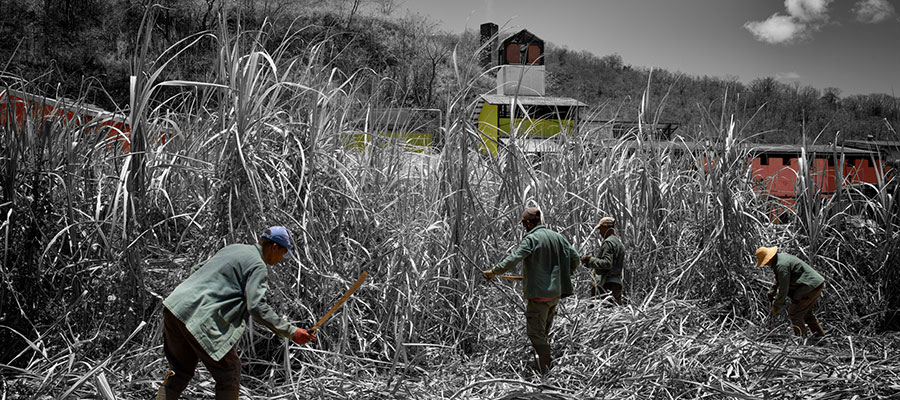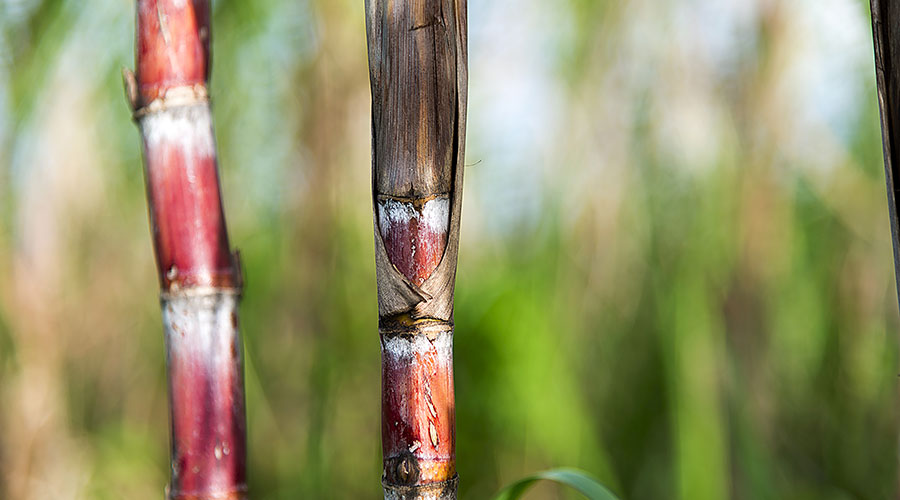Production is falling almost everywhere, and in some places, such as Réunion, it is collapsing. The notable exception is French Guiana.

Whether in Réunion, Guadeloupe or Martinique, the situation in the sugar cane industry is not looking good. In Martinique, 206,431 tonnes of cane were harvested in 2024, a decrease of 1.05% compared to 2023, on 4,013 hectares. This slight decline is like the tree that hides the forest. ‘The sugar content in the cane is very low, so much so that on some plots, the Brix level was below 16%. We’ve never seen such low levels!’ says Marc Sassier, president of the AOC. This is a problem for distilleries, given that a Brix level of around 20% is preferable for making rum. It’s also a problem for planters, whose pay is often linked to the Brix level. And it’s a particular problem for the Galion sugar factory, which is structurally in deficit and searching for sugar cane year after year.
In Guadeloupe, the situation is hardly any better. In July 2025, the sugar cane harvest even had to be extended in the hope of meeting quotas. In total, nearly 426,000 tonnes will be harvested for the 2025 season, while more than 455,000 tonnes were expected at the Gardel factory (the only sugar factory still in operation outside Marie-Galante). Added to this is a sugar yield that is also lower than expected. In Réunion, the situation is nothing short of catastrophic, with 972,000 tonnes of sugar cane expected, while the rum industry needs at least 1.5 million tonnes to operate normally. Here again, the sugar factories (which send their molasses to the three main distilleries) are operating at reduced capacity. If the sugar industry (Galion in Martinique, Gol and Bois Rouge in Réunion) were to collapse, the situation would become truly critical, particularly for sugar cane rums (see interview with Emilie Marty).
Structural and cyclical problems
The situation of the cane industry in the French overseas departments and regions (DROM) can be explained primarily by structural factors. The population of planters is ageing and is not being replaced. The profession is unattractive. It is considered too hard and not well paid. The same is true for seasonal jobs such as cane cutters.
Rum producers have also been complaining for years about the decline in the number of authorised ‘molecules’, i.e. synthetic weed killers that enable them to protect sugar cane from ‘weeds’ (the cane industry uses almost no fungicides or insecticides). As a result of these difficulties, many plots of land intended for sugar cane are being converted to other crops.
When this is not the case, they are being taken over by housing (urban sprawl). In some parts of Guadeloupe and Martinique, water shortages (drought) or, conversely, frequent flooding is also to blame.
In addition to these structural challenges, there are more sporadic phenomena, but their recurrence raises fear that they may become permanent. These include much more frequent and violent cyclones and tropical storms.
A tendency towards rain during the dry season has also been observed in recent years. As a result, sugar is struggling to concentrate in the cane, vegetation is growing back… In short, yields are falling. As these phenomena are clearly due to climate change, they are unlikely to diminish over time – quite the contrary.
A bonus for agricultural rum
However, the situation is not hopeless. When distilleries and brands have their own fields, the harvest seems to be less affected. In some French territories, such as French Guiana and French Polynesia, sugar cane is even being planted and production is increasing. “In French Guiana, we now operate the only agricultural rum distillery in the territory. We work with around 40 small growers, whom we support in improving yields and increasing the area under cultivation,” explains Grégoire Gueden, director of the spirits division of the GBH group. As part of an ambitious development plan, we have also acquired 180 hectares of land on the Mines plateau, a few kilometres from the distillery, where we have started our own plantations. Ultimately, our model will be based on a dual source of supply: cane from our partner growers and cane from our own crops. Our ambition is to achieve an annual rum production requiring 15,000 tonnes of cane.” But for the moment, this is a drop in the ocean. Overall, agricultural rum seems better equipped to withstand the decline in the amount of sugar cane available. Many distilleries do have their own plots of land. When they source their cane elsewhere, they can impose their own specifications, sign long-term contracts with growers and get a better price for the cane.
This is undoubtedly where efforts should be focused to ensure the long-term future of sugar cane cultivation. Better promoting growers, putting them in the spotlight and, above all, paying them better, somewhat along the lines of winegrowers in mainland France, would give the profession a boost.
In this respect, the Papa Rouyo project (Guadeloupe), with its vintages paying tribute to planters, is very interesting. In any case, agricultural distilleries have better control over their supply than molasses distilleries, which are dependent on the ups and downs of the sugar industry. If the latter were to collapse, rum producers using molasses as a raw material could always fall back on the production of agricultural rum. They generally have the equipment (except mills) and the know-how, but this would come at the cost of a history and culture that has endured for centuries.

